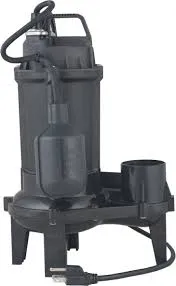Latvian
- Afrikaans
- Albanian
- Amharic
- Arabic
- Armenian
- Azerbaijani
- Basque
- Belarusian
- Bengali
- Bosnian
- Bulgarian
- Catalan
- Cebuano
- Corsican
- Croatian
- Czech
- Danish
- Dutch
- English
- Esperanto
- Estonian
- Finnish
- French
- Frisian
- Galician
- Georgian
- German
- Greek
- Gujarati
- Haitian Creole
- hausa
- hawaiian
- Hebrew
- Hindi
- Miao
- Hungarian
- Icelandic
- igbo
- Indonesian
- irish
- Italian
- Japanese
- Javanese
- Kannada
- kazakh
- Khmer
- Rwandese
- Korean
- Kurdish
- Kyrgyz
- Lao
- Latin
- Latvian
- Lithuanian
- Luxembourgish
- Macedonian
- Malgashi
- Malay
- Malayalam
- Maltese
- Maori
- Marathi
- Mongolian
- Myanmar
- Nepali
- Norwegian
- Norwegian
- Occitan
- Pashto
- Persian
- Polish
- Portuguese
- Punjabi
- Romanian
- Russian
- Samoan
- Scottish Gaelic
- Serbian
- Sesotho
- Shona
- Sindhi
- Sinhala
- Slovak
- Slovenian
- Somali
- Spanish
- Sundanese
- Swahili
- Swedish
- Tagalog
- Tajik
- Tamil
- Tatar
- Telugu
- Thai
- Turkish
- Turkmen
- Ukrainian
- Urdu
- Uighur
- Uzbek
- Vietnamese
- Welsh
- Bantu
- Yiddish
- Yoruba
- Zulu
Telephone: +86 13120555503
Email: frank@cypump.com
Nov . 21, 2024 08:29 Back to list
ejection pump
Understanding the Ejection Pump Functionality and Applications
Ejection pumps, also known as sewage or sump pumps, are essential devices widely used in residential, industrial, and wastewater management settings. They are designed to remove liquids, typically from basements or other low-lying areas where water tends to accumulate. This article explores the functionality, types, and applications of ejection pumps, shedding light on their significance in modern water management systems.
What is an Ejection Pump?
An ejection pump is a device that helps in the efficient removal of wastewater or stormwater from designated areas. It operates based on the principle of displacement, where a motor-driven impeller creates a vacuum that helps lift and push the water out of the designated space. Ejection pumps are particularly useful in scenarios where gravity alone cannot facilitate the flow of water, such as in basements that are below the local water table.
Types of Ejection Pumps
There are several types of ejection pumps available in the market, each crafted for specific applications
1. Sump Pumps Commonly found in residential basements, sump pumps are primarily used to prevent flooding by removing excess water accumulated in a sump basin.
2. Ejector Pumps These pumps are designed specifically for sewage and wastewater applications. They are often used in homes that are not connected to a municipal sewer line and rely on septic systems. Ejector pumps can handle solids and are installed in a pit to manage waste effectively.
3. Effluent Pumps These pumps are used to transport wastewater from higher elevations to lower ones. Unlike ejector pumps, effluent pumps can handle only small solids and are typically employed in low-pressure septic systems.
4. Submersible Pumps Designed to operate underwater, submersible pumps are used in both sump and ejector applications. Their sealed construction allows them to function while submerged, making them ideal for various conditions.
Applications of Ejection Pumps
Ejection pumps have a broad range of applications, providing essential functions in different settings
ejection pump

1. Residential Settings In homes, especially those built in flood-prone areas, ejection pumps prevent water accumulation. This is crucial not only for safeguarding property but also for enhancing comfort and livability.
2. Industrial Applications Industries utilize ejection pumps for managing wastewater generated in manufacturing processes. They help maintain a clean and safe work environment by efficiently disposing of wastewater.
3. Municipal Wastewater Treatment Ejection pumps are integral to municipal systems, aiding in the transport and treatment of sewage. They facilitate the movement of wastewater from collection points to treatment facilities, ensuring the system operates smoothly.
4. Construction Sites Ejection pumps can be deployed at construction sites to manage groundwater and prevent flooding. By keeping excavations dry, they enable safer working conditions and prevent delays in project timelines.
Benefits of Using Ejection Pumps
The implementation of ejection pumps brings numerous benefits, including
- Preventing Flood Damage By controlling water levels, they help prevent flooding, which can cause significant structural damage. - Health and Safety Efficient wastewater removal promotes hygiene and reduces the risk of waterborne diseases.
- Cost-Effectiveness Investing in ejection pumps can save homeowners and businesses money in the long run by reducing repair and mitigation costs associated with water damage.
- Environmental Protection Ejection pumps play a crucial role in ensuring that wastewater is handled appropriately, minimizing contamination of local waterways.
Conclusion
Ejection pumps are vital components in effective water management systems, serving myriad functions across residential, industrial, and municipal platforms. Understanding the different types and their applications equips individuals and businesses to make informed decisions about water management solutions. As technology advances, the efficiency and capability of ejection pumps continue to improve, promising an essential tool in the ongoing effort to manage and protect our water resources.
-
Durable & Efficient Submersible Mixed Flow Propeller Pumps Quotes
NewsApr.29,2025
-
BPA-Free Sand Gravel Pump for Aquariums & Industrial Use Terapump
NewsApr.29,2025
-
High-Efficiency Big Capacity Double Suction Pumps Bulk Supply
NewsApr.28,2025
-
High-Performance Vapor Honing Slurry Pumps Durable & Efficient Solutions
NewsApr.28,2025
-
OEM Slurry Pump Engineering Factory Custom Solutions & Durable Pumps
NewsApr.28,2025
-
1HP Sewage Submersible Pump Durable Vertical & WQ/QW Models Supplier
NewsApr.28,2025










